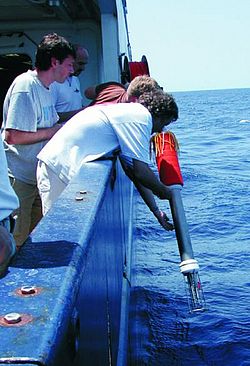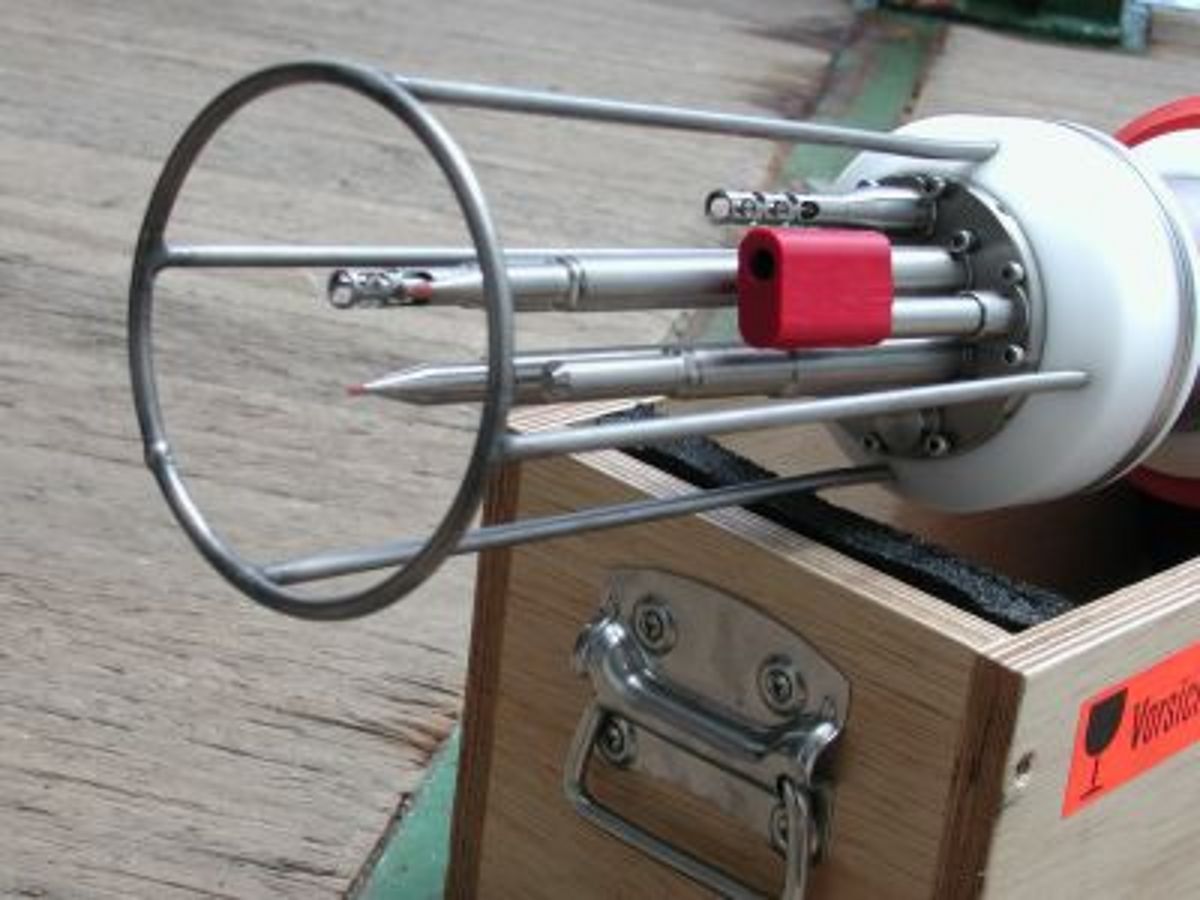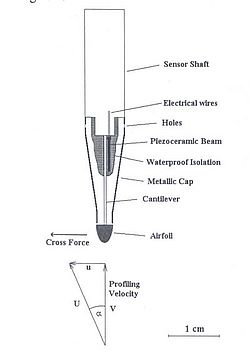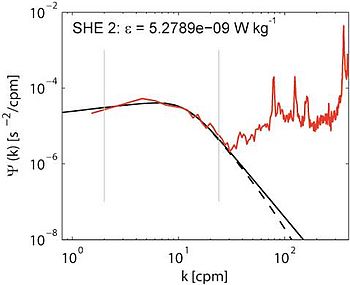General description of the system
The microstructure profiler is an instrument designed to measure velocity shear and temperature variability on vertical scales of less than a millimeter and simultaneously record other physical parameters of the ocean. The profiler is constructed to descent to depths as far as 2000m. In order to obtain data on micro scales, the probe operates with a very high sampling rate of 1024 Hz and is equipped with two shear probes (airfoil), a fast temperature sensor (microthermistor), an acceleration sensor, tilt sensors as well as the standard CTD sensors which measure temperature, conductivity and pressure with a lower sampling rate of 24 Hz. The profiler is a free falling device, which is adjusted to descend at a rate of 0.6 m/s in order to optimize the data processing of the airfoil probes. As the descent of the profiler itself disturbs the water column causing additional turbulence, it is important that the fast temperature sensor as well as the airfoil probes are mounted at the front of the profiler to ensure sampling of the turbulence, which is present in the unperturbed water column. The free falling instrument transmits the data via a Kevlar cable to the deck unit, which is installed onboard the ship and directly stores the measurements. To insure that the profiler can fall freely without causing tension on the cable, which would induce additional vibrations and perturb the measurements, the cable is veered at a rather high speed with a special winch.






